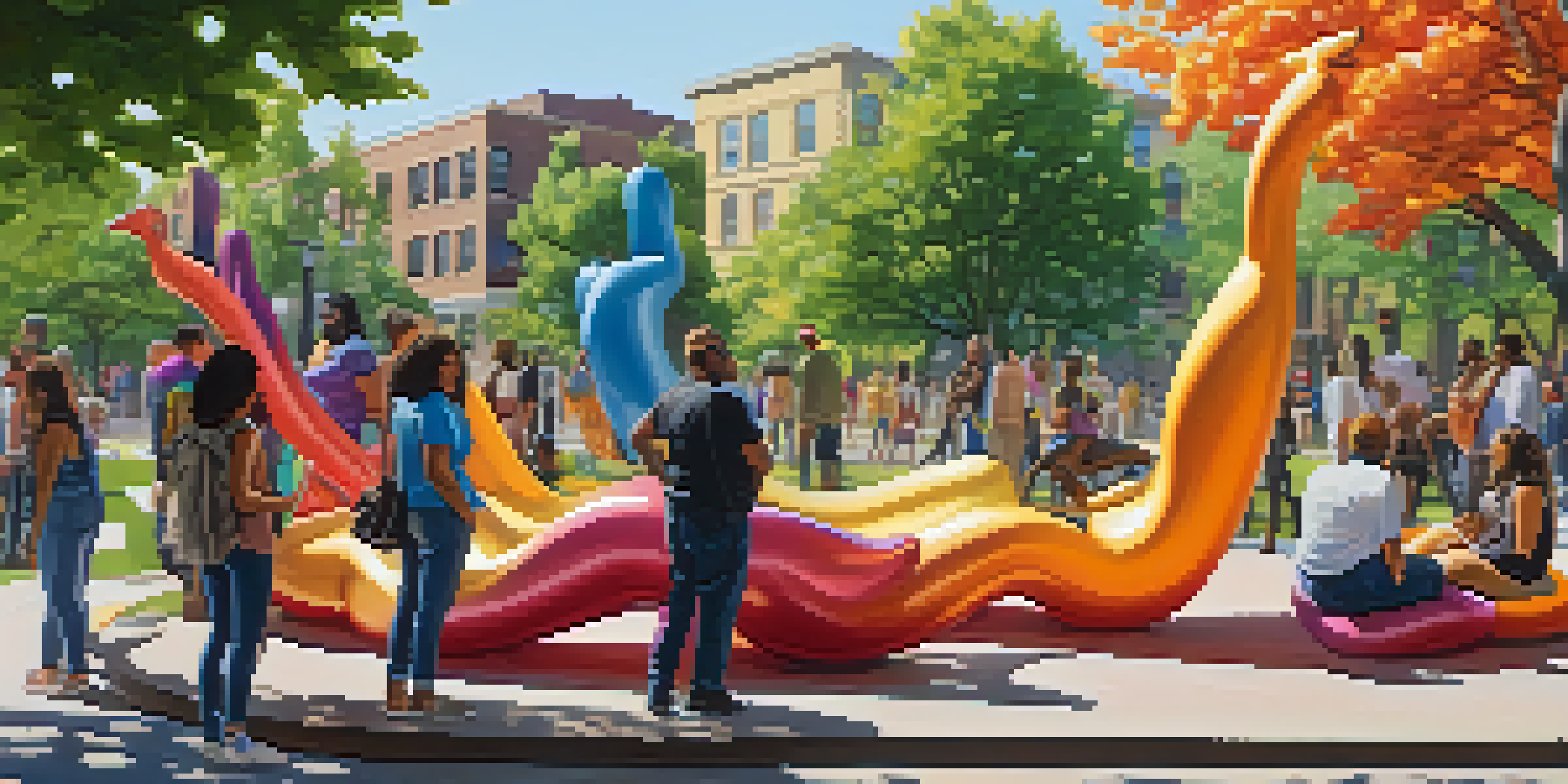Body Politics: Art and the Representation of Disability

Understanding Body Politics in Art and Society
Body politics refers to the ways in which bodies are regulated, represented, and politicized in society. In the context of art, this concept becomes particularly significant as it shapes how we perceive bodies, especially those that are often marginalized. Through various artistic expressions, body politics can challenge societal norms and provoke conversations about identity, accessibility, and representation.
The Historical Context of Disability Representation
Historically, people with disabilities have been underrepresented or misrepresented in art. From classical sculptures to contemporary installations, the portrayal of disability often reinforced stereotypes and societal fears. However, as artists began to challenge these narratives, a more nuanced understanding of disability emerged, leading to a richer representation of diverse experiences.
Body Politics Shapes Art Perception
Body politics influences how marginalized bodies are represented in art, prompting important discussions about identity and accessibility.
Artists Redefining Disability Through Their Work
Contemporary artists like Judith Scott and Alice Sheppard redefine disability through their groundbreaking work. Scott's intricate fiber sculptures reflect her lived experience as a deaf and artist with Down syndrome, while Sheppard's dance performances emphasize the beauty of movement, regardless of physical limitations. These artists not only express their identities but also invite audiences to reconsider their perceptions of disability.
The Role of Public Art in Disability Representation
Public art plays a crucial role in shaping societal views on disability. Large-scale installations and community projects can foster inclusivity and accessibility, making art more relatable to diverse audiences. For instance, the 'Crip Time' project challenges traditional notions of time and productivity, urging viewers to embrace different ways of being and experiencing the world.
Authenticity Drives Disability Narratives
Authentic representation by artists with disabilities fosters a more accurate understanding of their experiences, challenging stereotypes.
Intersectionality: Disability and Other Identities
Disability does not exist in isolation; it intersects with race, gender, and sexuality, among other identities. Artists who embrace this intersectionality bring layered narratives to their work, reflecting the multifaceted experiences of living with a disability. This approach encourages a deeper understanding of how various identities influence the perception and representation of disability in art.
Art as a Catalyst for Social Change
Art has the power to provoke thought and inspire action, making it an effective tool for social change. By highlighting the experiences of people with disabilities, artists can challenge societal norms and advocate for greater representation and accessibility. This transformative potential of art not only raises awareness but also cultivates empathy and understanding.
Art as a Tool for Social Change
Art serves as a powerful catalyst for social change, advocating for greater awareness and inclusivity for people with disabilities.
The Importance of Authentic Representation
Authenticity in representation is paramount when it comes to disability in art. Works created by artists with disabilities provide genuine insights into their experiences, allowing for a more accurate portrayal. This authenticity is crucial in dismantling stereotypes and fostering a more inclusive narrative that resonates with a broader audience.
Future Directions: Art and Disability Advocacy
The future of art and disability representation is promising, with increasing visibility and advocacy for inclusive practices. As more artists with disabilities gain recognition, the conversation around body politics will continue to evolve. By supporting these artists and embracing their narratives, we can contribute to a more equitable landscape in both art and society.